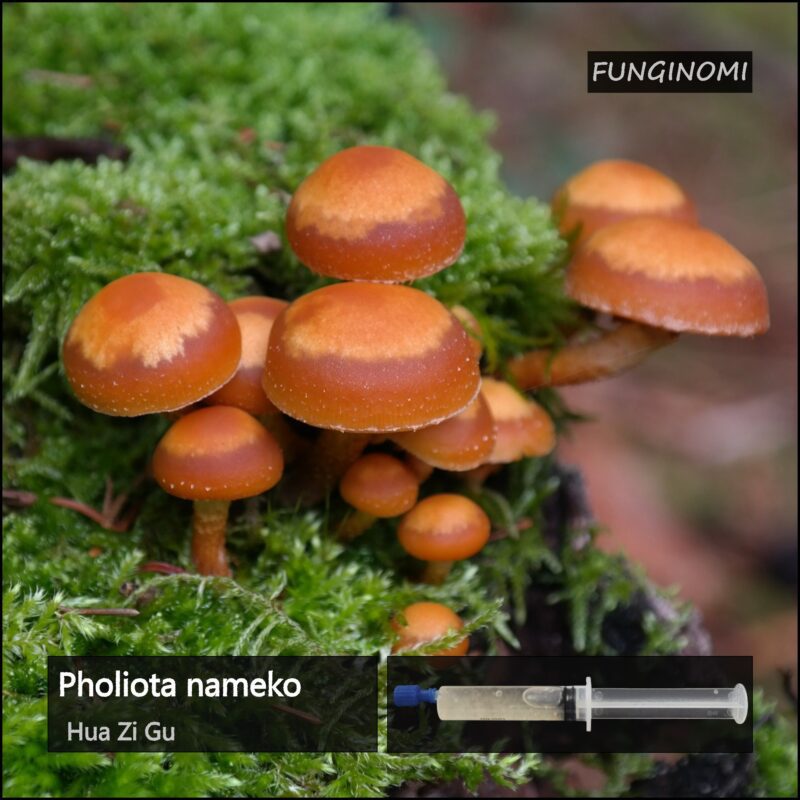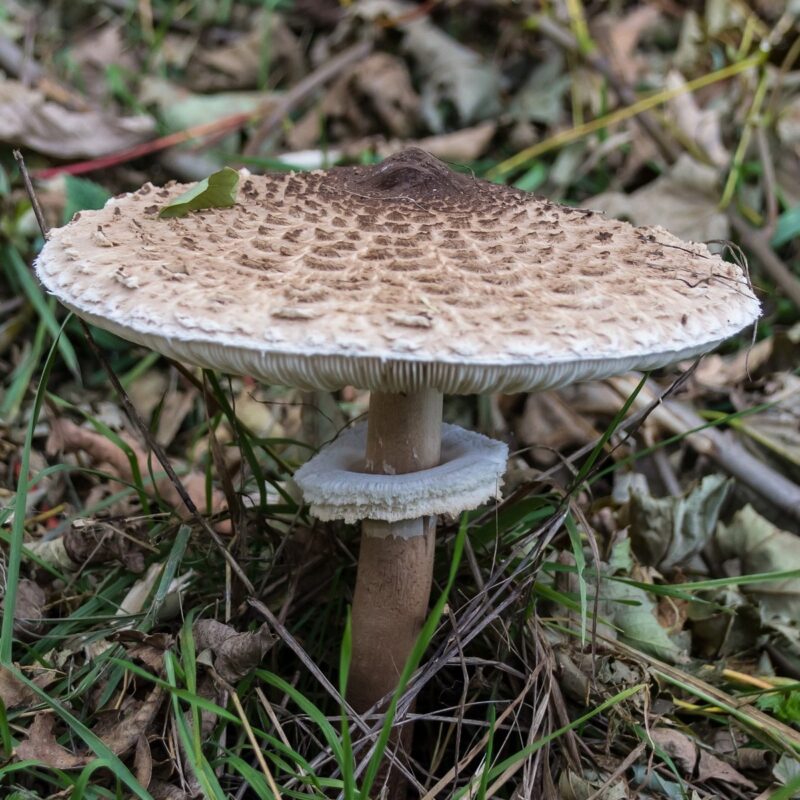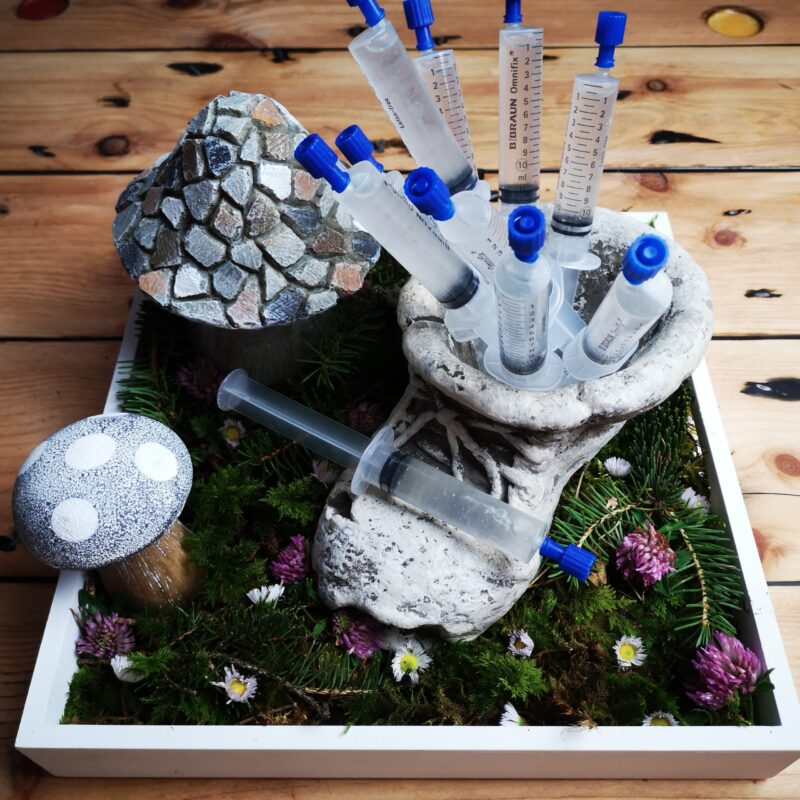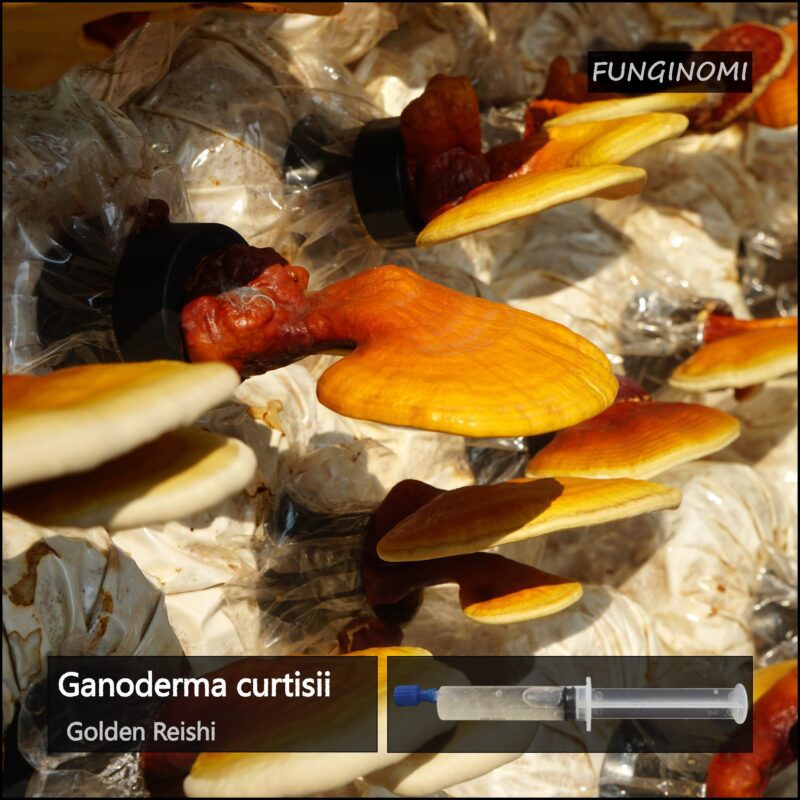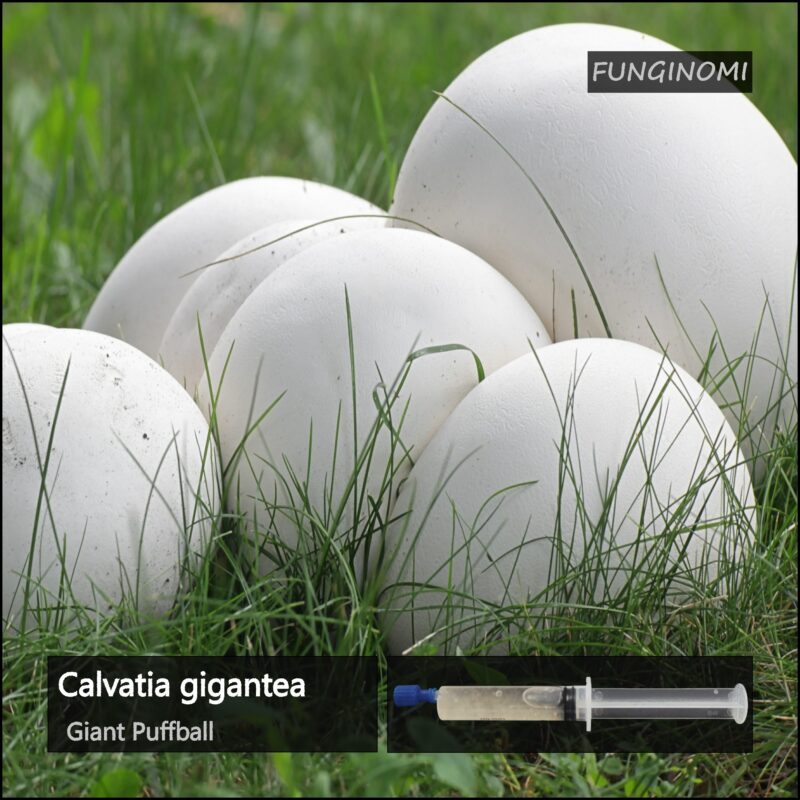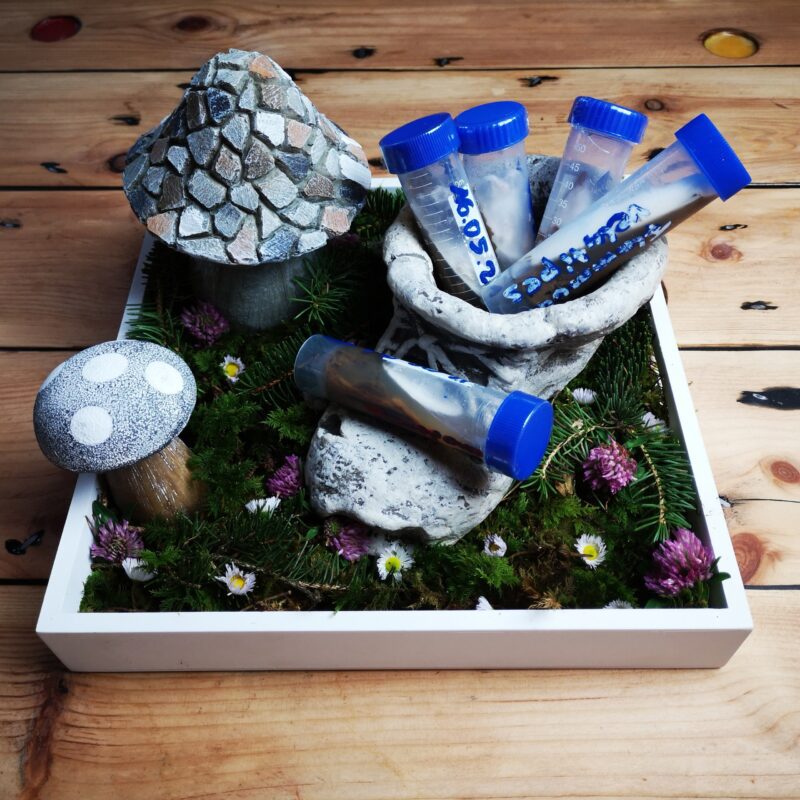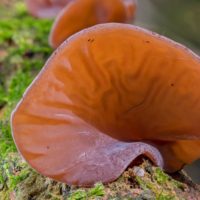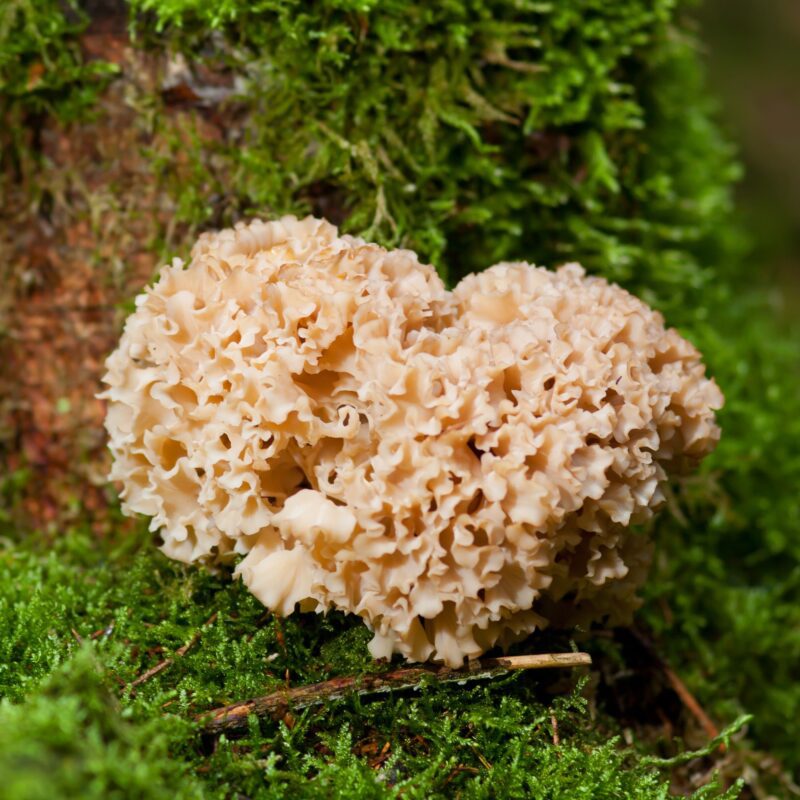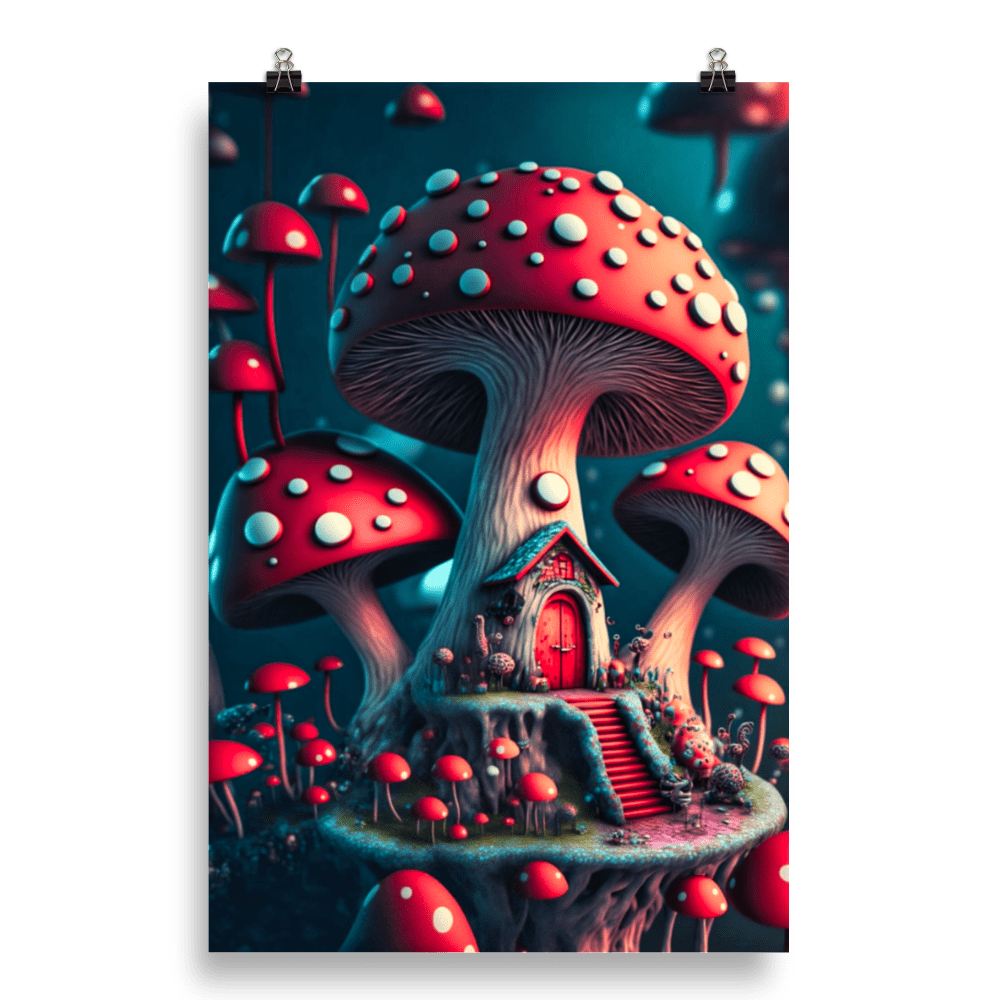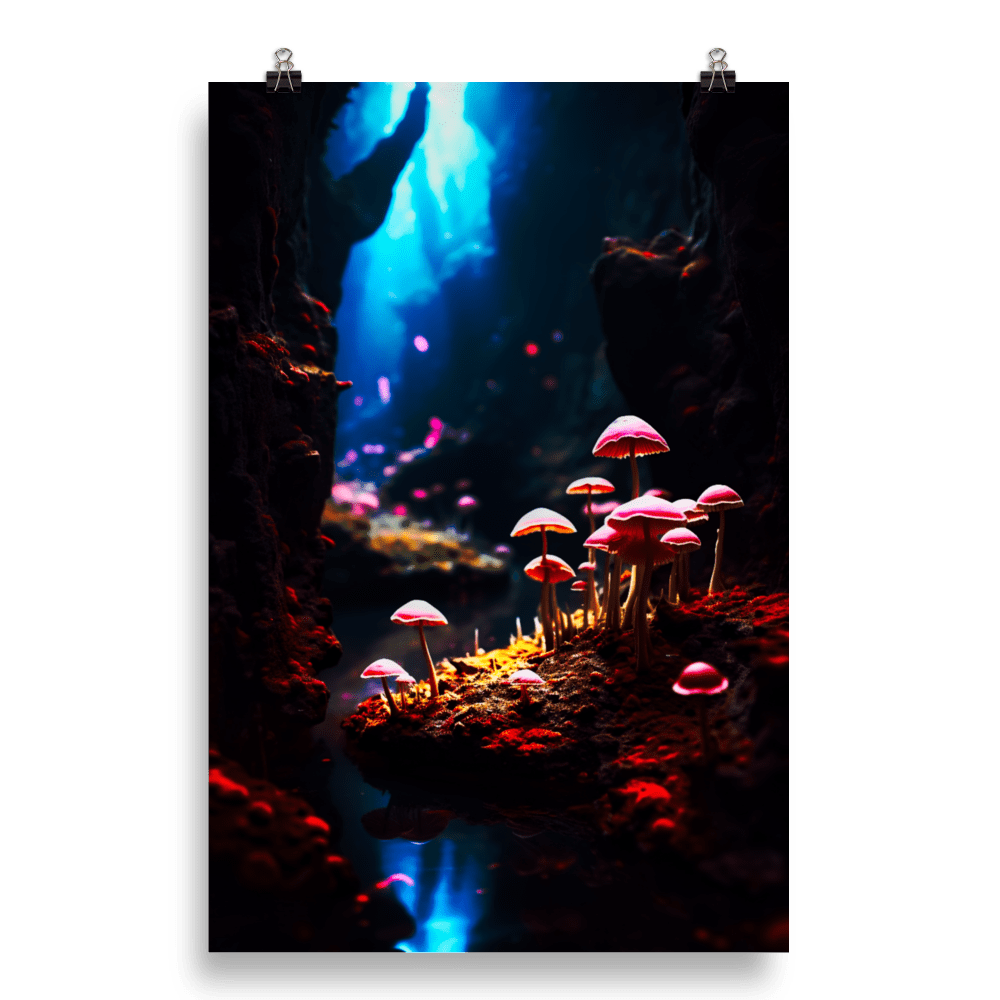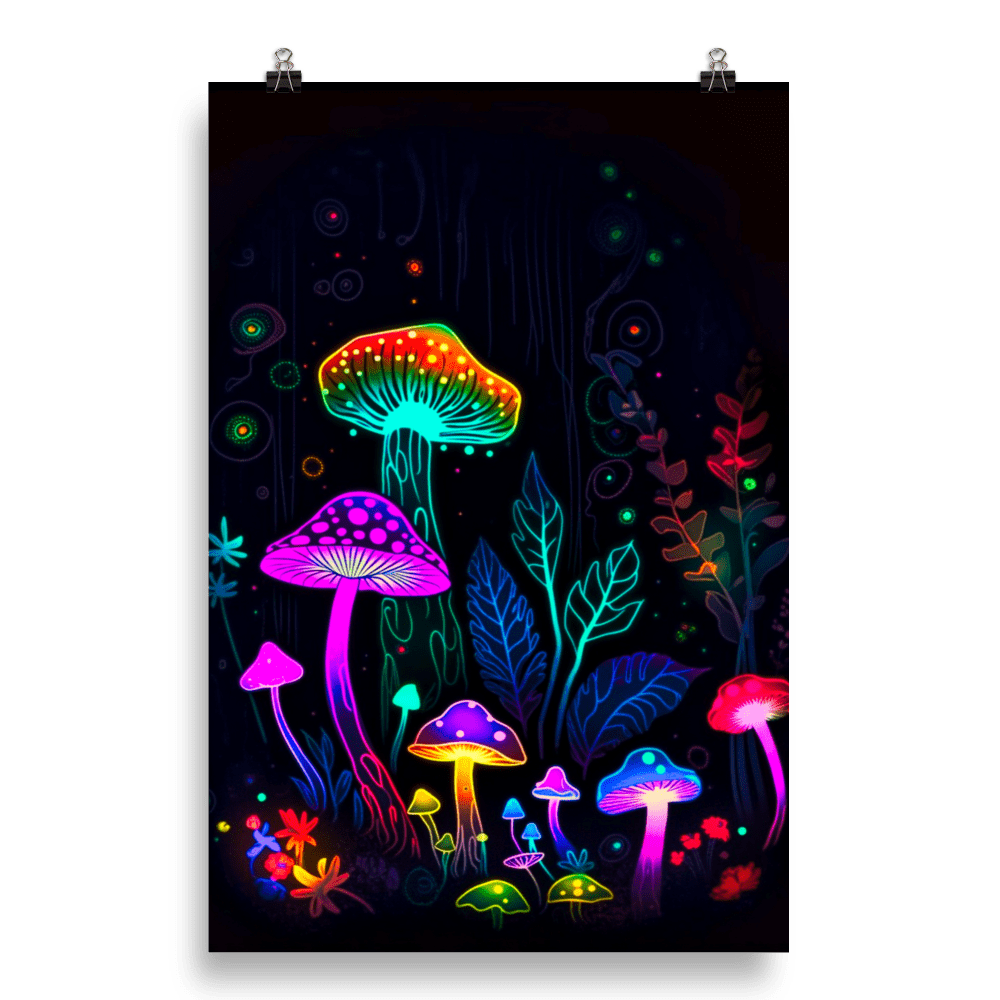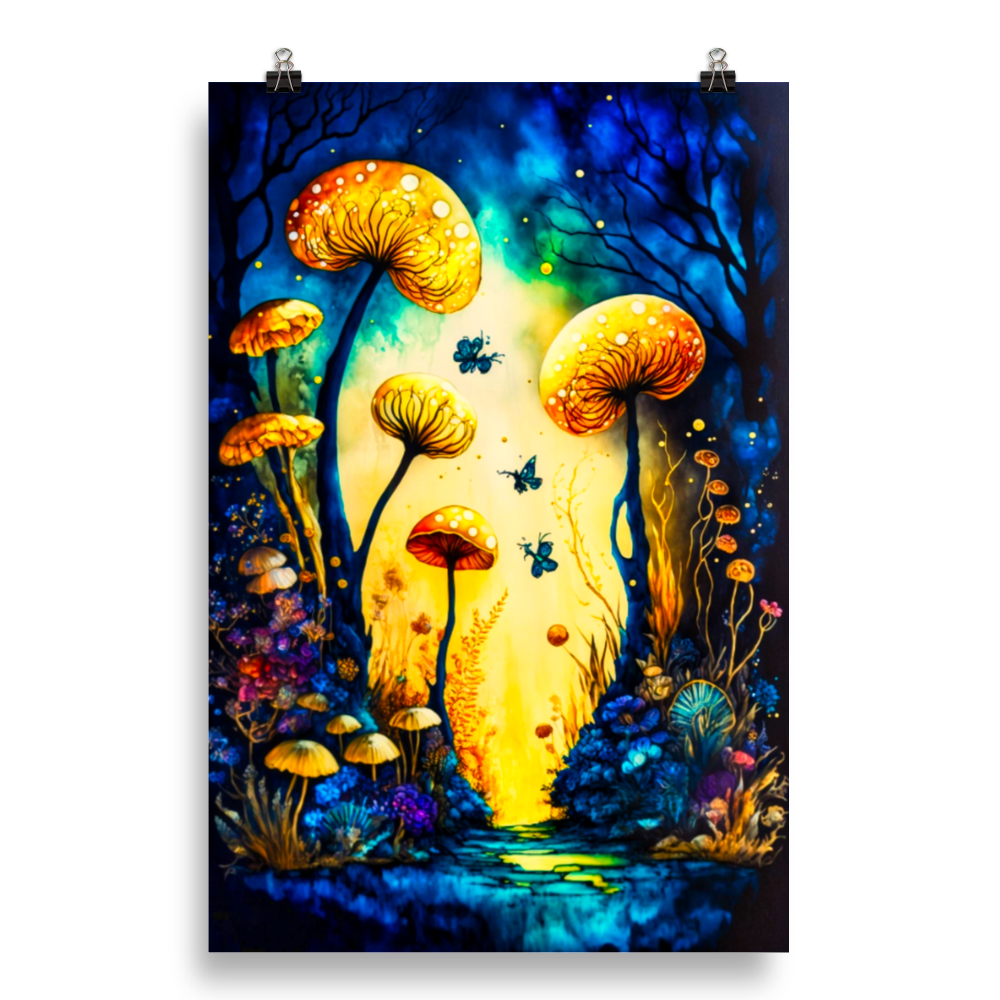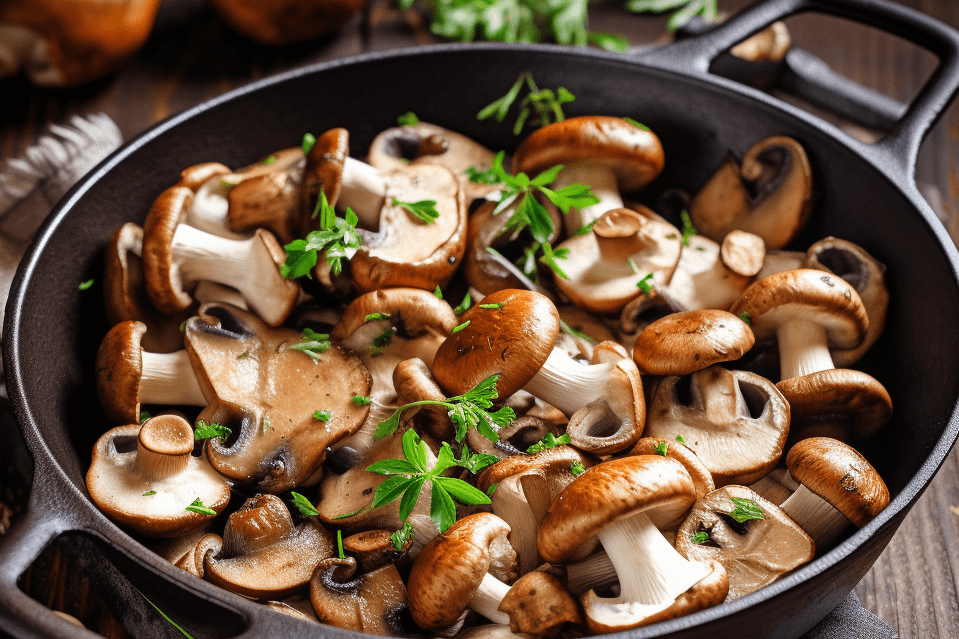A Comprehensive Guide to Safe Mushroom Consumption: Tips and Precautions
Introduction of proper mushroom harvesting and storage

Importance of safe mushroom consumption
- Preventing Accidental Poisoning:
- Safe mushroom consumption is crucial to avoid accidental poisoning, as some mushrooms can be highly toxic and potentially fatal if ingested.
- By following proper identification techniques and precautions, you significantly reduce the risk of consuming poisonous mushrooms.
- Maximizing Health Benefits:
- Consuming edible mushrooms can provide various health benefits, including nutritional value, immune system support, and potential medicinal properties.
- By ensuring safe mushroom consumption, you can fully enjoy the health benefits without compromising your well-being.
- Protecting the Environment:
- Responsible mushroom consumption involves sustainable practices and environmental stewardship.
- By learning to identify and harvest mushrooms properly, you can minimize damage to ecosystems and preserve the natural habitats where mushrooms grow.
- Promoting Cultural and Culinary Exploration:
- Mushrooms play an essential role in many cultures’ cuisines and traditional dishes.
- By safely consuming mushrooms, you can explore diverse culinary experiences and appreciate the cultural significance of these unique ingredients.
- Enjoying Recreational Experiences:
- Some mushrooms have psychoactive properties and are used for recreational purposes.
- Safe consumption ensures a positive and controlled experience, minimizing the risks associated with hallucinogenic mushrooms.
Remember, safe mushroom consumption involves thorough knowledge, proper identification, and cautious preparation. By following guidelines and taking necessary precautions, you can fully enjoy the world of mushrooms while safeguarding your health and the environment.
Understanding Mushroom Harvesting
Different types of edible mushrooms
- Gourmet Mushrooms:
- Gourmet mushrooms refer to a variety of cultivated edible mushrooms prized for their culinary value.
- Examples include shiitake, oyster mushrooms, portobello, cremini, and maitake.
- These mushrooms offer unique flavors, textures, and nutritional profiles, making them popular choices in gourmet cooking.
- Medicinal Mushrooms:
- Medicinal mushrooms have been used in traditional medicine for their potential health benefits.
- Examples include reishi, lion’s mane, cordyceps, chaga, and turkey tail mushrooms.
- These mushrooms are known for their immune-boosting properties, antioxidant effects, and potential anti-inflammatory and adaptogenic benefits.
- Magic Mushrooms (Psilocybin Mushrooms):
- Magic mushrooms contain the psychoactive compound psilocybin, known for its hallucinogenic effects.
- These mushrooms are typically classified into different species, including Psilocybe cubensis, Psilocybe semilanceata, and Psilocybe cyanescens, among others.
- Magic mushrooms are used for recreational and spiritual purposes, and their consumption requires careful consideration, responsible use, and adherence to legal regulations.
- Culinary Delicacies:
- Certain mushrooms are highly sought-after for their unique taste and culinary value.
- Examples include truffles (such as black truffles and white truffles), morels, matsutake, and porcini.
- These mushrooms are often considered delicacies due to their intense flavors and are used in gourmet dishes, sauces, and risottos.
- Edible Wild Mushrooms:
- There is a wide variety of edible wild mushrooms found in different regions.
- Examples include chanterelles, boletes, hen of the woods, lobster mushrooms, and puffballs.
- These mushrooms offer distinct flavors, textures, and appearances and are foraged from natural habitats, requiring proper identification and caution.
When exploring mushrooms with different characteristics, it’s crucial to prioritize safety, proper identification, and responsible consumption practices. Understand the specific characteristics, preparation methods, and potential risks associated with each type of mushroom before consuming them.
Identifying poisonous mushrooms
- Seek Expert Guidance:
- When it comes to identifying poisonous mushrooms, it is highly recommended to consult an experienced mycologist or mushroom identification expert.
- Joining local mycology clubs or attending workshops can provide valuable knowledge and guidance.
- Study Field Guides and Resources:
- Invest in reputable field guides or use reliable online resources specific to your region.
- Look for guides that include detailed descriptions, clear photographs, and information on toxic look-alikes.
- Pay Attention to Key Features:
- Familiarize yourself with the key features of poisonous mushrooms.
- Characteristics such as bright colors, unusual shapes, distinct odors (such as a strong almond scent), or the presence of staining or bruising may be warning signs.
- Learn about Toxic Look-alikes:
- Certain edible mushrooms have poisonous counterparts that closely resemble them.
- Focus on differentiating features such as gill attachment, stem color, spore color, and the presence of a universal veil or ring.
- Observe Habitat and Growth Patterns:
- Understanding the preferred habitats and growth patterns of poisonous mushrooms can help with identification.
- Some poisonous mushrooms may grow exclusively on certain trees, while others may appear in specific seasons or weather conditions.
- Be Cautious with New Species:
- Until you have gained sufficient experience and confidence in identification, avoid consuming mushrooms that you have not positively identified as safe.
- It is better to err on the side of caution when it comes to unfamiliar species.
- Avoid Common Toxic Species:
- Familiarize yourself with some commonly known toxic mushrooms that are prevalent in your area, such as Amanita phalloides (Death Cap) or Amanita muscaria (Fly Agaric).
- Learning to recognize and avoid these highly toxic mushrooms is crucial for safety.
Remember, accurate identification of mushrooms is essential for your safety. When in doubt, always consult an expert. Never consume any mushroom that you cannot confidently identify as safe.
Key characteristics to look for when selecting mushrooms
- Cap Appearance:
- Examine the cap of the mushroom. It should be relatively intact, firm, and free from significant damage or discoloration.
- Look for a smooth, dry surface without sliminess, excessive moisture, or mold.
- Color and Consistency:
- Pay attention to the color of the mushroom. It should be vibrant and typical for the species, indicating freshness.
- Avoid mushrooms with discolored, dull, or faded caps, as these may indicate spoilage or age.
- Check the consistency of the mushroom. It should feel firm and resilient to the touch, not soft or mushy.
- Stem Integrity:
- Inspect the stem of the mushroom. It should be firm, straight, and undamaged.
- Avoid mushrooms with hollow or spongy stems, as this may indicate deterioration or decay.
- Gills or Pores:
- For mushrooms with gills (thin, rib-like structures under the cap), look for clean, well-spaced gills that are not discolored or covered in mold.
- In mushrooms with pores (small holes or indentations on the underside of the cap), ensure they are intact and free from excessive moisture or signs of decay.
- Odor:
- Gently smell the mushroom. It should have a pleasant, earthy aroma characteristic of its species.
- Avoid mushrooms with foul or unpleasant odors, as this could indicate spoilage or the presence of toxins.
- Avoid Uncertain Identification:
- If you are unsure about the identification of a mushroom, it is better to err on the side of caution and not consume it.
- Avoid mushrooms with ambiguous or uncertain identification, especially if you are not an experienced forager or lack reliable expertise.
- Source and Freshness:
- Purchase mushrooms from reputable sources, such as trusted suppliers or certified growers.
- Consider the freshness of the mushrooms. Fresher mushrooms generally have better flavor, texture, and nutritional value.
By considering these key characteristics, you can select mushrooms that are fresh, visually appealing, and likely to provide an enjoyable culinary experience.
Safe Mushroom Foraging
Introduction to foraging for mushrooms
- Research Local Regulations:
- Before embarking on a mushroom foraging adventure, research and understand the local regulations and laws regarding foraging.
- Some areas may have restrictions on where and when you can forage, or require permits or licenses.
- Learn from Experienced Foragers:
- One of the best ways to learn about mushroom foraging is to join guided forays or learn from experienced foragers in your area.
- They can provide valuable insights into local mushroom species, identification techniques, and safe foraging practices.
- Invest in Reliable Field Guides and Resources:
- Purchase reliable field guides or use reputable online resources specific to your region.
- Look for guides that include detailed descriptions, clear photographs, and information on toxic look-alikes to aid in identification.
- Understand Mushroom Identification Basics:
- Familiarize yourself with the basic characteristics of mushrooms, such as cap shape, color, gill structure, stem features, and spore color.
- Learn about common edible mushrooms in your area, as well as the toxic species to avoid.
- Start with Easily Identifiable Edible Mushrooms:
- As a beginner, focus on easily recognizable edible mushrooms to build your confidence and knowledge.
- Some beginner-friendly mushrooms include chanterelles, morels, oyster mushrooms, or puffballs.
- Avoid Toxic Look-alikes:
- Learn to differentiate between edible mushrooms and their toxic look-alikes, which may resemble them closely in appearance.
- Pay attention to distinguishing features such as gill attachment, stem color, presence of a ring or veil, and spore color.
- Choose the Right Foraging Locations:
- Look for suitable habitats for mushroom growth, such as forests, woodlands, or meadows.
- Avoid foraging in areas exposed to pollution, such as near roadsides, industrial sites, or chemically treated lands.
- Respect Nature and Preserve Ecosystems:
- Forage responsibly by following the “leave no trace” principle, leaving the environment as you found it.
- Harvest mushrooms with care, cutting or gently twisting them at the base to ensure the mycelium remains undisturbed.
- Practice Caution and Responsible Consumption:
- Always be cautious and double-check the identification of any mushroom before consuming it.
- Start with small quantities when trying a new mushroom species, as individual sensitivities and reactions can vary.
Mushroom foraging can be a rewarding and enjoyable experience when done safely and responsibly. By following these introductory guidelines, you can begin your journey into the world of mushroom foraging with a focus on learning, identification, and preservation of the natural environment.
Researching and identifying safe foraging locations
- Study Local Ecosystems:
- Learn about the ecosystems in your region to understand the types of environments where mushrooms thrive.
- Identify the common habitats, such as forests, woodlands, meadows, or specific tree species, that support mushroom growth.
- Join Local Foraging Communities:
- Connect with local foraging communities, mushroom clubs, or online forums dedicated to mushroom foragers in your area.
- Engage with experienced foragers who can provide insights into prime foraging locations and share their knowledge.
- Seek Permission and Observe Regulations:
- If you plan to forage on private land, seek permission from the landowner before entering and harvesting mushrooms.
- Be aware of any specific regulations or restrictions related to foraging in public parks, nature reserves, or protected areas.
- Utilize Online Resources:
- Make use of online tools and resources that can help you identify potential foraging locations.
- Websites, forums, and social media groups dedicated to mushroom foraging often share tips, locations, and even maps indicating fruitful areas.
- Local Nature Centers and Botanical Gardens:
- Visit local nature centers, botanical gardens, or arboretums that may offer educational programs or guided walks focused on mushroom identification and foraging.
- These institutions can provide valuable information on safe foraging areas within their premises or nearby.
- Consult Local Experts:
- Reach out to local mycologists, botanists, or extension offices specializing in mushrooms or agriculture.
- They can provide insights into specific mushroom species, their habitats, and the best locations for foraging in your area.
- Scouting and Exploring:
- Explore nearby forests, parks, and nature trails to scout for potential foraging locations.
- Look for signs of mushrooms, such as fallen logs, leaf litter, or mycelium growth, which indicate a favorable habitat.
- Learn from Experience:
- With time and experience, you will develop a better understanding of the ecosystems and locations where mushrooms are likely to be found.
- Keep a record of successful foraging spots and revisit them during suitable seasons for consistent yields.
Remember, when foraging, prioritize respect for nature and the environment. Harvest mushrooms responsibly, taking care not to damage the ecosystem, and leave some mushrooms behind to support future growth. Always adhere to local regulations and seek expert advice when in doubt about the safety or legality of a foraging location.
Utilizing field guides and online resources
- Invest in Reliable Field Guides:
- Purchase reputable field guides specific to your region that focus on mushroom identification.
- Look for guides with clear photographs, detailed descriptions, and information on distinguishing features, habitats, and toxicity.
- Online Mushroom Identification Resources:
- Take advantage of online resources dedicated to mushroom identification.
- Websites, forums, and apps provide extensive databases, interactive tools, and forums where experts and enthusiasts share their knowledge and help with identification.
- Reputable Websites and Blogs:
- Visit reputable websites and blogs focused on mushrooms and foraging.
- These platforms often provide detailed information on mushroom species, identification tips, and recommended foraging locations.
- Look for websites affiliated with trusted mycologists, universities, or nature organizations.
- Social Media Groups and Forums:
- Join online social media groups or forums dedicated to mushroom foraging and identification.
- Participate in discussions, ask questions, and share photos for assistance with identification.
- Engage with experienced foragers who can provide valuable insights and recommendations.
- Online Mushroom Identification Tools:
- Explore online tools specifically designed for mushroom identification.
- These tools often utilize visual recognition algorithms, allowing you to upload photos for automated identification or comparison with known species.
- Community-Based Identification Platforms:
- Utilize community-based identification platforms where experts and enthusiasts help identify mushrooms.
- Upload clear, well-lit photos of the mushroom from different angles to receive accurate identifications or suggestions for further research.
- YouTube Channels and Video Resources:
- Watch educational videos on YouTube channels dedicated to mushrooms and foraging.
- Many channels feature tutorials on identification techniques, mushroom habitats, and tips for safe foraging practices.
- Mobile Apps:
- Install mobile applications designed for mushroom identification and foraging.
- These apps often provide searchable databases, photo galleries, and interactive features to aid in identification while in the field.
Remember, when using online resources, verify the credibility and expertise of the sources to ensure reliable and accurate information. Cross-reference information from multiple sources and consult expert opinions when needed. Field guides and online resources complement each other, offering a comprehensive approach to mushroom identification and foraging.
Engaging with local mushroom foraging communities
- Find Local Mushroom Foraging Groups:
- Search for local mushroom foraging groups or clubs in your area.
- Look for groups on social media platforms, community forums, or websites dedicated to mushroom enthusiasts.
- Join relevant groups to connect with like-minded individuals who share a passion for mushrooms.
- Attend Group Events and Forays:
- Participate in group events, workshops, or forays organized by the local mushroom foraging community.
- These events often include guided mushroom walks, educational sessions, and hands-on experiences with experienced foragers.
- It’s a great opportunity to learn from experts, ask questions, and gain practical knowledge about local mushroom species.
- Share and Learn from Experiences:
- Engage in discussions within the community to share your experiences and learn from others.
- Ask questions, seek advice, and contribute your insights on mushroom identification, foraging techniques, and favorite foraging locations.
- Sharing knowledge and experiences fosters a supportive and collaborative learning environment.
- Attend Workshops and Classes:
- Explore workshops or classes offered by local mycology organizations, nature centers, or universities.
- These educational opportunities may cover topics such as mushroom identification, ecology, medicinal uses, and cooking techniques.
- Interact with instructors and fellow participants to expand your understanding of mushrooms and foraging practices.
- Mentorship Programs:
- Inquire about mentorship programs or initiatives within the mushroom foraging community.
- Some experienced foragers may be willing to mentor beginners and provide personalized guidance in identifying mushrooms, choosing foraging locations, and practicing safe techniques.
- Participate in Citizen Science Projects:
- Engage in citizen science projects related to mushrooms, where individuals contribute to data collection and research efforts.
- These projects often involve documenting and reporting mushroom sightings, tracking distribution patterns, and contributing to scientific studies.
- Share Foraging Finds and Recipes:
- Share photos and stories of your foraging finds within the community.
- Discuss favorite recipes, preservation techniques, and culinary tips related to mushrooms.
- This creates a sense of camaraderie and allows for the exchange of ideas and inspiration.
Engaging with local mushroom foraging communities provides a valuable opportunity to learn, network, and contribute to the collective knowledge of mushroom enthusiasts. By connecting with experienced foragers, attending events, and actively participating in discussions, you can enhance your foraging skills, discover new mushroom species, and develop a deeper appreciation for the fascinating world of fungi.
Purchasing Mushrooms
Choosing reputable suppliers and farmers’ markets
- Research Local Suppliers:
- Conduct research to identify local suppliers who specialize in mushrooms.
- Look for suppliers that have a reputation for providing high-quality, fresh mushrooms.
- Seek Recommendations:
- Ask for recommendations from friends, family, or fellow mushroom enthusiasts who have experience purchasing mushrooms.
- Their firsthand experiences can help you find trustworthy suppliers.
- Check Certifications and Credentials:
- Look for suppliers who have relevant certifications or credentials, such as organic certifications or food safety certifications.
- These certifications indicate that the supplier follows proper practices and standards in mushroom cultivation or sourcing.
- Visit Farmers’ Markets:
- Visit local farmers’ markets where you can find fresh produce, including mushrooms, directly from local farmers.
- Interact with the farmers and ask them about their growing practices, mushroom varieties, and any certifications they may have.
- Assess Mushroom Quality:
- When purchasing mushrooms, assess their quality by considering factors such as appearance, texture, and aroma.
- Look for mushrooms that are firm, free from blemishes or mold, and have a fresh, earthy smell.
- Inquire about Mushroom Varieties:
- Ask suppliers or farmers about the different mushroom varieties they offer.
- Reputable suppliers should be able to provide information on the various types of mushrooms, their flavors, and potential culinary uses.
- Consider Seasonality:
- Keep in mind that different mushroom varieties have specific seasons when they are at their best.
- Consider purchasing mushrooms that are in season for optimal flavor and freshness.
- Read Reviews and Testimonials:
- Look for online reviews or testimonials about the suppliers or farmers’ markets you are considering.
- Feedback from previous customers can give you insights into the quality, reliability, and customer service of the supplier.
- Prioritize Sustainable and Ethical Practices:
- If sustainability and ethical considerations are important to you, inquire about the supplier’s practices.
- Look for suppliers who prioritize sustainable cultivation methods, environmentally friendly packaging, and fair trade practices.
- Compare Prices:
- Compare prices among different suppliers or farmers’ markets to ensure you are getting a fair value for the mushrooms.
- Keep in mind that premium or specialty mushrooms may be priced higher due to their uniqueness or limited availability.
By following these guidelines, you can choose reputable suppliers or farmers’ markets that offer high-quality mushrooms. Whether you opt for local suppliers or farmers’ markets, prioritize freshness, quality, and reliable sourcing practices to ensure a satisfying culinary experience with your mushrooms.
Inspecting mushrooms for quality and freshness
- Visual Examination:
- Inspect the mushrooms visually for any signs of damage, discoloration, or mold.
- Look for mushrooms that have a fresh and vibrant appearance, with intact caps and stems.
- Firmness and Texture:
- Gently squeeze the mushrooms to assess their firmness.
- Fresh mushrooms should feel firm and have a slight resistance when pressed.
- Avoid mushrooms that feel overly soft, slimy, or have a mushy texture.
- Aroma:
- Smell the mushrooms to check for a pleasant, earthy aroma.
- Fresh mushrooms should have a clean, mushroom-like scent.
- Avoid mushrooms with a strong or unpleasant odor, which could indicate spoilage.
- Color:
- Examine the color of the mushrooms.
- Different mushroom varieties have their own characteristic colors, but they should generally appear vibrant and consistent.
- Avoid mushrooms with dull or faded colors, as this can be a sign of age or deterioration.
- Moisture Content:
- Check the moisture level of the mushrooms.
- They should be slightly moist but not excessively wet or slimy.
- Excessive moisture can lead to rapid spoilage.
- Check for Bruising or Discoloration:
- Carefully inspect the mushrooms for any bruises, dark spots, or areas of discoloration.
- Bruised or discolored portions can indicate damage or decay.
- Choose mushrooms with minimal blemishes or discoloration.
- Verify the Stem Integrity:
- Ensure that the mushroom stems are intact and firm.
- Mushrooms with broken or mushy stems may be less fresh or have compromised quality.
- Avoid Insects or Pest Damage:
- Look for any signs of insect infestation or pest damage.
- Check for holes, tunnels, or other indications of insects or pests.
- Avoid mushrooms that show visible signs of damage caused by pests.
Remember, fresh mushrooms should have a clean and appealing appearance, firm texture, earthy aroma, and vibrant colors. Trust your senses when assessing their quality and freshness. If in doubt, it is best to choose mushrooms that meet these criteria and avoid any that show signs of spoilage or deterioration.
Ensuring proper storage conditions
- Refrigeration:
- Store mushrooms in the refrigerator to maintain their freshness and extend their shelf life.
- Place them in a breathable container, such as a paper bag or a loosely covered container, to allow air circulation.
- Temperature and Humidity:
- Set the refrigerator temperature between 1-4°C (34-39°F) to create a cool and suitable environment for mushrooms.
- Avoid storing mushrooms in the coldest parts of the refrigerator, such as near the back or the freezer compartment.
- Mushrooms prefer a slightly higher humidity level than other produce, around 85-95%. If your refrigerator has a humidity control feature, adjust it accordingly.
- Packaging:
- Remove any plastic wrapping or packaging that may trap moisture and promote condensation.
- Instead, use a breathable container or wrap the mushrooms in a paper towel to absorb excess moisture.
- Separation:
- Keep different mushroom varieties separated to prevent cross-contamination of flavors and aromas.
- Place each type of mushroom in a separate container or use separate bags.
- Avoid Washing Before Storage:
- Do not wash mushrooms before storing them, as excess moisture can accelerate spoilage.
- Clean mushrooms just before use by gently wiping them with a damp cloth or a soft brush to remove any dirt or debris.
- Use Within a Few Days:
- Mushrooms are best consumed within a few days of purchase for optimal freshness and flavor.
- Plan your meals accordingly to make the most of your mushroom supply.
- Freezing (Optional):
- If you have excess mushrooms that you can’t consume within a few days, consider freezing them.
- Clean and slice the mushrooms, then spread them in a single layer on a baking sheet and freeze them for a couple of hours.
- Once frozen, transfer them to a freezer-safe container or bag.
- Frozen mushrooms are best used in cooked dishes, as their texture may change after thawing.
- Regular Inspection:
- Periodically check your stored mushrooms for any signs of spoilage, mold, or unpleasant odors.
- Remove any mushrooms showing signs of deterioration to prevent them from affecting the others.
By following these storage guidelines, you can help prolong the freshness and quality of your mushrooms. Proper refrigeration, temperature, humidity, and packaging practices will ensure that your mushrooms stay in optimal condition until you’re ready to enjoy them in your favorite recipes.
Cleaning and Preparation
Cleaning techniques to remove dirt and debris
- Gently Wipe with a Damp Cloth:
- Take a clean, damp cloth or paper towel and gently wipe the mushroom caps and stems.
- Start from the top and work your way down to remove any visible dirt or debris.
- Be careful not to apply excessive pressure, as mushrooms are delicate and can easily bruise.
- Soft Brush or Mushroom Brush:
- Use a soft-bristled brush, such as a mushroom brush or a clean, dry toothbrush, to brush off any dirt or debris.
- Brush in a gentle, circular motion to dislodge particles without damaging the mushrooms.
- Pay attention to the gills or ridges underneath the mushroom cap, as they can trap dirt.
- Rinse under Cold Water:
- If necessary, rinse the mushrooms under cold running water to remove stubborn dirt.
- Hold the mushrooms under the faucet, allowing the water to gently flow over them.
- Avoid soaking the mushrooms or leaving them under running water for an extended period.
- Briefly rinse and immediately pat them dry with a clean towel to remove excess moisture.
- Trim the Stems (optional):
- If the mushroom stems appear tough or woody, you can trim them before cleaning.
- Use a sharp knife to remove the tough ends of the stems.
- This step is optional and depends on personal preference or the specific recipe.
- Avoid Prolonged Soaking:
- Mushrooms are porous and can absorb water, which can affect their texture and flavor.
- To prevent waterlogged mushrooms, avoid soaking them in water for an extended period.
- Clean Just Before Use:
- It is best to clean mushrooms just before using them in your recipe.
- Cleaning them in advance can introduce excess moisture and promote spoilage.
Remember, mushrooms are delicate and can easily bruise or become waterlogged, so handle them gently during the cleaning process. Choose the cleaning method that suits your preference and the specific condition of the mushrooms. Clean mushrooms will be ready to be incorporated into your favorite dishes, ensuring a delightful culinary experience.
Trimming and discarding any damaged or questionable parts
- Inspect the Mushrooms:
- Carefully examine each mushroom for any visible signs of damage, such as bruises, blemishes, or spots.
- Look for any areas that appear slimy, discolored, or have an unpleasant odor.
- Trim Bruised or Discolored Areas:
- If you notice any bruised or discolored parts on the mushrooms, use a sharp knife or kitchen shears to carefully trim them off.
- Cut just below the affected area, ensuring that you remove all the damaged portions.
- Trim enough to reach the fresh, healthy part of the mushroom.
- Check for Mold or Spoilage:
- Look closely for any signs of mold growth on the mushrooms.
- If you spot mold, it’s best to discard the entire mushroom, as mold can spread quickly and may indicate spoilage.
- Also, discard any mushrooms that have a strong, unpleasant odor, as it could be a sign of spoilage.
- Remove Tough Stems (if desired):
- Some mushroom varieties have tough or woody stems that may not be enjoyable to eat.
- If desired, trim off the ends of the stems with a knife before cooking.
- This step is optional and depends on personal preference or the specific recipe.
- Discard Questionable Mushrooms:
- If you come across any mushrooms that you are unsure about or have doubts regarding their quality or safety, it’s best to err on the side of caution and discard them.
- Trust your instincts and prioritize your health and safety.
By inspecting the mushrooms closely and removing any damaged, discolored, or questionable parts, you can ensure that you are working with fresh and healthy mushrooms for your culinary creations. Properly trimmed mushrooms will contribute to the overall quality and flavor of your dishes.
Appropriate methods for different mushroom varieties
- Common Mushrooms (Button, Cremini, Portobello):
- Common mushrooms have a relatively smooth texture and can be easily cleaned.
- Gently wipe them with a damp cloth or use a soft brush to remove any dirt or debris.
- Rinse under cold running water if needed, but avoid soaking.
- Exotic or Wild Mushrooms (Morels, Chanterelles, Porcini):
- Exotic or wild mushrooms tend to have unique textures and may require specific cleaning techniques.
- Use a soft brush to remove any dirt or debris from the delicate caps and stems.
- Rinse briefly under cold running water, being careful not to oversaturate them.
- Pat them dry immediately after rinsing to prevent water retention.
- Oyster Mushrooms:
- Oyster mushrooms have delicate, frilly caps that can trap dirt and debris.
- Gently separate the clusters and inspect each mushroom individually.
- Use a soft brush or a damp cloth to clean the caps and remove any debris.
- Rinse briefly under cold running water, if necessary, and pat them dry gently.
- Shiitake Mushrooms:
- Shiitake mushrooms have a slightly tougher texture and may have residual dirt on their caps.
- Use a damp cloth or soft brush to wipe off any dirt or debris from the caps and stems.
- If needed, rinse briefly under cold running water and pat them dry gently.
- Enoki Mushrooms:
- Enoki mushrooms have long, slender stems and delicate caps.
- Separate the clusters and trim the root ends if desired.
- Rinse the mushrooms briefly under cold running water to remove any dirt or debris.
- Gently pat them dry with a clean towel.
- Porcini Mushrooms:
- Porcini mushrooms are known for their earthy flavor and firm texture.
- Use a brush or a damp cloth to clean the caps and remove any dirt or debris.
- Avoid soaking porcini mushrooms, as they can absorb water easily.
- Morel Mushrooms:
- Morel mushrooms have a unique, sponge-like texture and can trap debris.
- Gently brush the mushrooms with a soft brush to remove any dirt or debris from the ridges and crevices.
- Rinse briefly under cold running water, if needed, and pat them dry gently.
Always adapt the cleaning method based on the specific characteristics of each mushroom variety. Remember to handle mushrooms delicately to avoid bruising or damaging their delicate textures. Clean mushrooms just before use to maintain their freshness and quality.
Pro tips for enhancing flavors during preparation
- Sautéing with Aromatics:
- Start by sautéing mushrooms in a hot pan with a small amount of oil or butter.
- Add aromatic ingredients such as minced garlic, shallots, or onions to infuse the mushrooms with additional flavors.
- The combination of mushrooms and aromatics creates a delicious base for various dishes.
- Seasoning with Herbs and Spices:
- Enhance the flavor profile of mushrooms by using herbs and spices.
- Common choices include thyme, rosemary, parsley, sage, paprika, or even a pinch of nutmeg.
- Experiment with different herb and spice combinations to find your preferred flavor profile.
- Deglazing with Wine or Stock:
- Deglazing the pan with wine, vegetable broth, or mushroom stock can add depth and complexity to the flavors.
- After sautéing the mushrooms, add a splash of liquid and scrape the browned bits from the bottom of the pan.
- This process helps incorporate those flavorful bits into the dish.
- Acidic Ingredients for Brightness:
- Adding a touch of acidity can brighten the flavors of mushroom dishes.
- Try incorporating a squeeze of lemon juice or a splash of vinegar (such as balsamic or sherry vinegar) to balance the richness of the mushrooms.
- Umami Boosters:
- Mushrooms naturally contain umami, a savory taste that adds depth to dishes.
- Enhance the umami flavor by incorporating ingredients like soy sauce, tamari, miso paste, or Worcestershire sauce into your recipes.
- These umami-rich ingredients can amplify the overall flavor profile of the dish.
- Roasting for Intensified Flavors:
- Roasting mushrooms can intensify their flavors and bring out their natural sweetness.
- Toss whole or sliced mushrooms with olive oil, salt, and pepper, then roast them in a hot oven until they become golden brown and slightly caramelized.
- Pairing with Complementary Ingredients:
- Consider pairing mushrooms with ingredients that complement their flavors.
- Examples include garlic, onions, cheese (such as Parmesan or Gruyere), thyme, truffle oil, or even a drizzle of honey.
- Experiment with different combinations to find your preferred taste profiles.
- Reducing Sauces for Concentrated Flavors:
- If making mushroom sauces or gravies, allow them to simmer and reduce to concentrate the flavors.
- This reduction process intensifies the taste and creates a richer sauce.
Remember to taste and adjust the seasonings as you cook to ensure a well-balanced and flavorful result. These pro tips can help you elevate the taste of your mushroom dishes and make them even more enjoyable and satisfying.
Cooking Methods
Overview of popular cooking techniques
- Sautéing:
- Sautéing is a common and versatile cooking technique for mushrooms.
- Heat a pan with oil or butter over medium-high heat.
- Add sliced or chopped mushrooms and cook them quickly, stirring occasionally until they turn golden brown and release their moisture.
- Sautéed mushrooms can be used in various dishes, such as pasta, stir-fries, omelets, or as a side dish.
- Grilling:
- Grilling mushrooms adds a smoky and charred flavor to enhance their natural earthiness.
- Preheat the grill to medium-high heat.
- Brush whole mushrooms or large mushroom slices with oil and season them with salt, pepper, and desired herbs.
- Grill the mushrooms directly on the grates until they become tender and develop grill marks, flipping them as needed.
- Grilled mushrooms can be enjoyed as a standalone dish, added to salads, sandwiches, or used as toppings for burgers.
- Roasting:
- Roasting mushrooms concentrates their flavors and brings out their natural sweetness.
- Preheat the oven to a high temperature, usually around 200-220°C (400-425°F).
- Toss whole or sliced mushrooms with oil, salt, pepper, and any desired herbs or spices.
- Spread them out in a single layer on a baking sheet and roast in the oven until they are golden brown and tender.
- Roasted mushrooms can be served as a side dish, tossed with pasta, incorporated into grain bowls, or used as a pizza topping.
- Stir-Frying:
- Stir-frying is a quick and flavorful method for cooking mushrooms.
- Heat a wok or a large skillet over high heat.
- Add oil and heat it until it shimmers.
- Add sliced mushrooms and stir-fry them for a few minutes until they are cooked through but still retain their crispness.
- Stir-fried mushrooms can be used in Asian-inspired dishes, stir-fry noodles, fried rice, or as a component in vegetable stir-fries.
- Steaming:
- Steaming is a gentle cooking technique that preserves the natural flavors and textures of mushrooms.
- Place a steamer basket in a pot with a small amount of water.
- Add whole or sliced mushrooms to the steamer basket and cover the pot.
- Steam the mushrooms for a few minutes until they become tender.
- Steamed mushrooms can be served as a side dish, added to salads, or used in dumplings and other steamed dishes.
- Braising:
- Braising involves cooking mushrooms slowly in a flavorful liquid to develop rich and tender results.
- Heat oil or butter in a Dutch oven or a deep skillet over medium heat.
- Add mushrooms and cook them until they release their moisture and start to brown.
- Add broth, wine, or other liquid of choice, along with herbs, spices, and seasonings.
- Cover the pot and simmer the mushrooms over low heat until they become tender and infused with flavors.
- Braised mushrooms can be served as a side dish, added to stews, soups, or used as a topping for steaks and poultry.
These popular cooking techniques offer different ways to prepare mushrooms, each with its own unique flavor profile and texture. Experiment with these methods to discover your favorite ways of cooking mushrooms and enjoy their delicious versatility.
Pairing mushrooms with complementary ingredients
- Garlic and Onions:
- Garlic and onions add aromatic and savory flavors that pair well with mushrooms.
- Sauté minced garlic and onions with mushrooms to enhance their taste and create a flavorful base for various dishes.
- Fresh Herbs:
- Fresh herbs like thyme, rosemary, parsley, and sage complement the earthy flavors of mushrooms.
- Add them during cooking or as a garnish to infuse the dish with additional freshness and herbal notes.
- Cheese:
- Cheese can elevate the flavors of mushrooms and add richness.
- Grated Parmesan, Gruyere, goat cheese, or blue cheese can be used to top mushroom dishes or incorporated into fillings and stuffings.
- Cream and Butter:
- Cream and butter bring richness and smoothness to mushroom preparations.
- Cream-based sauces or incorporating a knob of butter in sautéed mushrooms can enhance their flavors.
- Wine and Vinegar:
- Wine, such as white wine or red wine, can be used to deglaze the pan when cooking mushrooms.
- The acidity in vinegar, like balsamic vinegar or sherry vinegar, can provide a tangy contrast to the earthy flavors of mushrooms.
- Truffle Oil or Truffle Salt:
- Truffle oil or truffle salt can add a luxurious and distinctive flavor to mushroom dishes.
- Use them sparingly as a finishing touch to bring out the earthiness and enhance the overall taste.
- Nuts:
- Nuts, such as walnuts, almonds, or pine nuts, provide a pleasant crunch and nutty flavor that pairs well with mushrooms.
- Toasted nuts can be sprinkled on top of mushroom dishes or incorporated into stuffings or fillings.
- Citrus:
- Citrus fruits, like lemon or orange, can add brightness and a refreshing tang to mushroom preparations.
- A squeeze of citrus juice or a hint of zest can balance the earthiness of mushrooms and add a pop of flavor.
- Fresh Greens:
- Pairing mushrooms with fresh greens, such as spinach, kale, or arugula, can add a vibrant element to the dish.
- Sauté mushrooms and greens together or incorporate them in salads or pasta dishes for a nutritious and flavorful combination.
- Grains:
- Mushrooms work well with various grains like rice, quinoa, barley, or pasta.
- Combining mushrooms with grains adds texture, creates hearty dishes, and allows the flavors to blend harmoniously.
Experiment with these complementary ingredients to create delicious mushroom dishes that are well-balanced and full of flavor. The combinations are endless, so feel free to explore and find your own favorite pairings.
Potential Risks and Precautions
Allergies and sensitivities
- Mushroom Allergies:
- Some individuals may be allergic to mushrooms and experience allergic reactions upon consumption.
- Allergic symptoms can range from mild to severe and may include itching, hives, swelling, difficulty breathing, or anaphylaxis in rare cases.
- If you suspect or have known mushroom allergies, it is essential to avoid consuming mushrooms altogether.
- Cross-Reactivity:
- Cross-reactivity can occur between certain types of mushrooms and other allergenic foods.
- For example, individuals allergic to molds may also experience allergic reactions to mushrooms since mushrooms are fungi.
- If you have known allergies to molds or other fungi, consult with a healthcare professional before consuming mushrooms.
- Sensitivities to Specific Mushroom Varieties:
- While rare, some individuals may have sensitivities or adverse reactions to specific mushroom varieties.
- For instance, individuals with an intolerance to histamine may experience symptoms such as headaches, flushing, or gastrointestinal discomfort when consuming certain mushrooms like shiitake or porcini.
- If you suspect or have experienced adverse reactions to specific mushrooms, it is best to avoid those varieties or seek guidance from a healthcare professional.
- Cross-Contamination:
- Cross-contamination can occur when mushrooms come into contact with allergenic substances during storage, handling, or cooking.
- If you have allergies or sensitivities, ensure that mushrooms are stored separately from allergenic foods and prepared using clean utensils and surfaces to minimize the risk of cross-contamination.
- Consultation with Healthcare Professionals:
- If you have a known mushroom allergy, sensitivity, or history of adverse reactions, it is advisable to consult with an allergist or healthcare professional.
- They can provide guidance, perform allergy tests if necessary, and offer personalized recommendations based on your specific situation.
- Label Reading and Caution at Restaurants:
- When dining out or purchasing pre-packaged mushroom products, carefully read labels for potential allergens or cross-contamination risks.
- If you have allergies or sensitivities, inform restaurant staff about your dietary restrictions to ensure safe food preparation.
- Personal Vigilance:
- Individuals with allergies or sensitivities should always be vigilant about the ingredients in foods, including sauces, seasonings, and dishes that may contain mushrooms.
- When trying new mushroom varieties or dishes, start with small portions to monitor any potential adverse reactions.
Remember, it is crucial to consult with healthcare professionals for personalized advice and guidance regarding allergies, sensitivities, or adverse reactions to mushrooms. Being aware of your own health conditions and taking necessary precautions will help ensure a safe and enjoyable culinary experience.
Common toxic mushrooms to avoid
- Amanita phalloides (Death Cap):
- The Death Cap is one of the most dangerous and deadly mushrooms.
- It resembles edible mushrooms and can be easily mistaken for them.
- Consumption of even a small amount can cause severe liver damage and be fatal.
- Amanita muscaria (Fly Agaric):
- Fly Agaric mushrooms contain toxins that can cause hallucinations, delirium, and other adverse effects.
- They are brightly colored with a distinctive red cap and white spots, making them easily recognizable.
- Gyromitra esculenta (False Morel):
- False Morels have a wrinkled, brain-like appearance and are often mistaken for true Morel mushrooms.
- They contain a toxin called gyromitrin, which can cause severe gastrointestinal symptoms, including vomiting, diarrhea, and in some cases, liver toxicity.
- Cortinarius species:
- Many species within the Cortinarius genus contain toxins that can cause kidney damage or failure.
- They vary in appearance and can be challenging to identify accurately, making it safer to avoid all Cortinarius mushrooms.
- Galerina species:
- Galerina mushrooms resemble small brown or tan edible mushrooms.
- They contain amatoxins, similar to the Death Cap, and can cause severe liver damage if consumed.
- Inocybe species:
- Inocybe mushrooms are typically small, dull-colored, and have fibrous stems.
- Some species within this genus contain toxins that can cause gastrointestinal distress and neurological symptoms.
- Clitocybe dealbata (Deadly Fibrecap):
- Deadly Fibrecap mushrooms are white or pale-colored with a distinctive funnel shape.
- They contain toxins that can cause gastrointestinal symptoms and can be harmful if consumed.
It is essential to note that accurately identifying mushrooms can be challenging, and consuming wild mushrooms carries inherent risks. If you are unsure about the identification of a mushroom or its edibility, it is best to err on the side of caution and avoid consuming it. Consult with experienced mushroom foragers, mycologists, or mushroom identification experts to ensure safe mushroom consumption.
Understanding the risks associated with wild foraged mushrooms
- Misidentification:
- One of the greatest risks of foraging wild mushrooms is the potential for misidentifying toxic or poisonous species.
- Mistaking a poisonous mushroom for an edible variety can lead to severe illness or even death.
- Accurate identification skills and knowledge are crucial when foraging mushrooms.
- Toxic Varieties:
- Some wild mushrooms contain toxins that can cause a range of adverse effects, including gastrointestinal distress, organ failure, hallucinations, or even death.
- Toxic mushrooms may closely resemble edible species, making it challenging for inexperienced foragers to differentiate between them.
- Regional Differences:
- Mushroom toxicity can vary based on geographical locations and specific ecosystems.
- A mushroom considered edible in one region may have toxic look-alikes or different species in another region.
- Foragers should be aware of the local mushroom species and any regional variations in toxicity.
- Environmental Contaminants:
- Wild mushrooms can absorb and accumulate environmental contaminants, such as heavy metals and pollutants.
- Foragers should avoid picking mushrooms from polluted areas, including sites near industrial zones, highways, or agricultural fields with chemical usage.
- Allergic Reactions:
- Some individuals may have allergies or sensitivities to certain mushrooms, leading to allergic reactions upon consumption.
- Allergic symptoms can range from mild itching and rashes to severe respiratory difficulties in rare cases.
- It is important to be aware of any known allergies or sensitivities before consuming wild mushrooms.
- Parasitic Infestations:
- Wild mushrooms can sometimes be infested with insects, worms, or other parasites.
- Consuming mushrooms with parasites may pose health risks and cause gastrointestinal problems or parasitic infections.
- Indigestibility:
- Certain wild mushrooms may be technically edible but difficult to digest or cause digestive discomfort in some individuals.
- It is essential to be aware of personal tolerances and potential digestive issues associated with specific mushroom species.
To mitigate the risks associated with foraging wild mushrooms:
- Educate yourself on mushroom identification through reliable sources, experienced foragers, or mycological societies.
- Start by foraging well-known edible species before venturing into more advanced identification.
- Cross-reference multiple field guides or use mushroom identification apps to increase accuracy.
- Consider attending mushroom foraging workshops or guided trips to learn from experienced foragers.
- When in doubt about the identification of a mushroom, do not consume it.
- Cook wild mushrooms thoroughly before consuming to help neutralize certain toxins.
- If you experience any adverse symptoms after consuming a wild mushroom, seek medical attention immediately.
Remember, responsible foraging practices and a deep understanding of mushroom identification are crucial for ensuring a safe and enjoyable wild mushroom foraging experience.
Safe consumption practices for individuals with compromised immune systems
Individuals with compromised immune systems need to exercise extra caution when consuming mushrooms to minimize the risk of foodborne illnesses or infections. Here are some safe consumption practices to follow:
- Consult with a Healthcare Professional: Seek guidance from a healthcare professional, such as a physician or registered dietitian, who can provide personalized recommendations based on your specific immune system condition.
- Avoid Raw Mushrooms: Cook mushrooms thoroughly before consumption. Cooking helps kill harmful bacteria, viruses, or parasites that may be present on raw mushrooms. Ensure that mushrooms reach a safe internal temperature of at least 165°F (74°C) during cooking.
- Choose Fresh and High-Quality Mushrooms: Select fresh, firm, and undamaged mushrooms from reputable sources. Avoid mushrooms that appear spoiled, slimy, or have an off smell.
- Proper Food Handling: Practice good hygiene by washing your hands thoroughly with soap and water before handling mushrooms. Clean cutting boards, utensils, and surfaces that come into contact with mushrooms to prevent cross-contamination.
- Storage: Store mushrooms properly in the refrigerator at or below 41°F (5°C) to maintain freshness and minimize the growth of harmful bacteria. Consume mushrooms within their recommended shelf life to avoid consuming spoiled mushrooms.
- Avoid Wild Mushrooms: Unless you have expert knowledge and confidence in identifying safe edible mushrooms, it is advisable to avoid consuming wild mushrooms. The risk of misidentification and consuming toxic species is high, especially for individuals with compromised immune systems.
- Purchase from Trusted Sources: Obtain mushrooms from reputable suppliers, such as grocery stores, farmers’ markets, or certified mushroom producers. These sources adhere to quality standards and ensure proper handling and storage of mushrooms.
- Thoroughly Clean Mushrooms: Before cooking, rinse mushrooms gently under cool running water to remove any dirt or debris. Use a soft brush or cloth to clean delicate mushrooms without damaging their texture.
- Moderation: Consume mushrooms in moderation and gradually introduce them into your diet. This allows you to observe any potential adverse reactions or sensitivities to specific mushroom varieties.
- Observe Hygienic Cooking Practices: Maintain a clean cooking environment and avoid cross-contamination with other ingredients. Use separate utensils and cutting boards for mushrooms to prevent the spread of harmful bacteria.
- Reheating and Leftovers: If reheating leftover mushroom dishes, ensure they are heated to a safe internal temperature to kill any bacteria that may have multiplied during storage. Discard any leftover mushrooms if they have been left at room temperature for more than two hours.
Always prioritize your health and consult with healthcare professionals to ensure that mushroom consumption aligns with your specific immune system condition. By following these safe consumption practices, you can minimize potential risks and enjoy mushrooms as part of a balanced and nourishing diet.
Drying and Preserving Mushrooms
Techniques for preserving mushrooms
Mushrooms can be preserved to extend their shelf life and enjoy their flavors throughout the year. Here are some techniques for preserving mushrooms that will help you make the most of your harvest:
- Drying: Drying mushrooms is a popular method that concentrates their flavors and allows for long-term storage. Follow these steps:
- Clean the mushrooms by gently brushing off any dirt or debris.
- Slice the mushrooms into thin, uniform pieces for even drying.
- Lay the mushroom slices in a single layer on a drying rack or a baking sheet lined with parchment paper.
- Place the mushrooms in a well-ventilated area or use a food dehydrator set to a low temperature (around 120°F or 50°C).
- Allow the mushrooms to dry for several days until they become crispy and brittle.
- Store the dried mushrooms in airtight containers or sealable bags in a cool, dry place.
- Freezing: Freezing mushrooms helps retain their texture and flavors. Here’s how to freeze mushrooms effectively:
- Clean the mushrooms by wiping them gently with a damp cloth or paper towel. Avoid soaking them in water, as mushrooms are porous and can become waterlogged.
- Slice or chop the mushrooms according to your preference.
- Blanch the mushrooms briefly in boiling water for 1-2 minutes, then immediately transfer them to an ice bath to stop the cooking process.
- Drain the mushrooms thoroughly and pat them dry with a paper towel.
- Place the mushrooms in airtight freezer bags or containers, removing as much air as possible.
- Label the bags with the date and variety of mushrooms.
- Store the mushrooms in the freezer for up to six months.
- Pickling: Pickling mushrooms not only preserves them but also adds a tangy and flavorful twist. Here’s a simple pickling method:
- Clean the mushrooms by gently brushing off any dirt or debris.
- Slice or quarter the mushrooms, depending on their size.
- In a saucepan, combine equal parts vinegar and water along with pickling spices such as peppercorns, bay leaves, and garlic.
- Bring the mixture to a boil and let it simmer for a few minutes.
- Add the mushrooms to the pickling liquid and cook for a few more minutes until they become slightly tender.
- Transfer the mushrooms and the pickling liquid to sterilized jars, ensuring the mushrooms are fully submerged.
- Allow the jars to cool, then refrigerate them. The pickled mushrooms can be stored in the refrigerator for several weeks.
- Canning: Canning mushrooms is a great option for long-term preservation. Follow these guidelines for safe canning:
- Clean the mushrooms thoroughly by gently brushing off any dirt or debris.
- Slice or quarter the mushrooms.
- Prepare a brine solution using water, vinegar, and salt. Bring it to a boil.
- Pack the mushroom slices into sterilized canning jars, leaving a bit of headspace.
- Pour the hot brine over the mushrooms, ensuring they are fully covered.
- Remove any air bubbles by running a clean utensil along the inside of the jar.
- Apply sterilized lids and rings to the jars, following proper canning procedures.
- Process the jars in a pressure canner or water bath canner, following recommended times and pressures for your altitude and mushroom variety.
- Once processed, store the jars in a cool, dark place for long-term preservation.
Remember to follow proper food safety practices during the preservation process to avoid any risks of foodborne illnesses. Enjoy the preserved mushrooms in various dishes such as soups, stews, sauces, and stir-fries, adding their unique flavors to your culinary creations throughout the year.
Air-drying, dehydrating, and freezing methods
Preserving mushrooms is a great way to enjoy their flavors and extend their shelf life. Here are three popular methods—air-drying, dehydrating, and freezing—for preserving mushrooms:
- Air-Drying:
- Clean the mushrooms by gently brushing off any dirt or debris.
- Slice the mushrooms into thin, uniform pieces for even drying.
- Arrange the mushroom slices in a single layer on a drying rack or a baking sheet lined with parchment paper.
- Place the mushrooms in a well-ventilated area away from direct sunlight. Good airflow helps the drying process.
- Allow the mushrooms to air-dry for several days until they become dry and brittle. They should no longer feel soft or pliable.
- Once fully dried, store the mushrooms in airtight containers or sealable bags in a cool, dry place.
- Dehydrating:
- Clean the mushrooms by gently brushing off any dirt or debris.
- Slice the mushrooms into thin, uniform pieces.
- Follow the instructions of your food dehydrator to set the appropriate temperature (typically between 120°F and 140°F or 50°C and 60°C).
- Arrange the mushroom slices on the dehydrator trays, ensuring proper spacing for good air circulation.
- Place the trays in the dehydrator and allow the mushrooms to dry for several hours or until they are fully dehydrated and crispy.
- Once dehydrated, let the mushrooms cool down to room temperature before transferring them to airtight containers or sealable bags.
- Store the dehydrated mushrooms in a cool, dry place away from moisture and sunlight.
- Freezing:
- Clean the mushrooms by wiping them gently with a damp cloth or paper towel. Avoid soaking them in water to prevent waterlogging.
- Slice or chop the mushrooms according to your preference.
- Blanch the mushrooms briefly by submerging them in boiling water for 1-2 minutes.
- Quickly transfer the blanched mushrooms into an ice bath to cool them down and stop the cooking process.
- Drain the mushrooms thoroughly and pat them dry with a paper towel to remove excess moisture.
- Place the mushrooms in airtight freezer bags or containers, removing as much air as possible to prevent freezer burn.
- Label the bags or containers with the date and mushroom variety for easy identification.
- Place the mushrooms in the freezer, ensuring they remain frozen at a consistent temperature (typically 0°F or -18°C) for long-term storage.
These preservation methods allow you to enjoy mushrooms year-round. Air-dried mushrooms add a concentrated flavor to soups, sauces, and stews. Dehydrated mushrooms can be rehydrated before use or crushed into powder for seasoning. Frozen mushrooms work well in cooked dishes like stir-fries, risottos, or pasta sauces.
Remember to follow proper food safety guidelines during the preservation process, including clean handling practices, and store the preserved mushrooms in appropriate containers to maintain their quality. Enjoy the rich flavors of preserved mushrooms in your culinary creations!
Best practices for long-term storage
Proper storage is crucial to maintain the quality and flavor of preserved mushrooms over an extended period. Here are some best practices for long-term storage:
- Cool and Dry Environment: Store your preserved mushrooms in a cool, dry place away from direct sunlight, heat sources, and moisture. The ideal storage temperature is around 50°F (10°C) with low humidity levels. Avoid storing them near stoves, dishwashers, or sinks.
- Airtight Containers: Use airtight containers or sealable bags to prevent air exposure and moisture absorption. Proper sealing helps retain the flavor and texture of the preserved mushrooms and minimizes the risk of spoilage. Choose containers that are suitable for long-term storage and resistant to odors and moisture.
- Labeling and Date: Clearly label each container or bag with the type of preserved mushrooms and the date of preservation. This helps you identify the contents and monitor their storage duration. Use waterproof labels or markers that won’t fade or smudge over time.
- Avoid Stacking or Crushing: Avoid stacking heavy items on top of the containers or bags of preserved mushrooms, as it can cause crushing and damage. Keep them in a dedicated storage area where they won’t be subjected to unnecessary pressure.
- Rotation and First-In-First-Out (FIFO): Practice a “first-in, first-out” approach when using your preserved mushrooms. Consume the oldest ones first to ensure freshness. Regularly check your storage and rotate the containers to maintain an organized system and prevent any items from being forgotten or left unused for too long.
- Regular Inspections: Periodically inspect your stored preserved mushrooms for any signs of spoilage, such as mold growth, off odors, or changes in texture. If you notice any abnormalities, discard the affected mushrooms to prevent contamination of the rest.
- Avoid Freezer Burn: If you are storing mushrooms in the freezer, ensure they are properly sealed in airtight containers or bags to prevent freezer burn. Freezer burn can affect the texture and flavor of the mushrooms, leading to a deteriorated quality. Consider using vacuum-sealed bags or removing excess air from the containers to minimize the risk of freezer burn.
- Optimal Storage Duration: While the specific storage duration may vary depending on the preservation method used, it is generally recommended to consume preserved mushrooms within a year for the best quality and flavor. Regularly check for any changes in appearance, smell, or taste to ensure they are still suitable for consumption.
By following these best practices, you can ensure that your preserved mushrooms remain in excellent condition for an extended period. Enjoy their flavors and versatility in various dishes whenever you desire a taste of preserved goodness!
Mushroom-Related Recipes
A collection of delicious and safe mushroom recipes
Mushrooms offer a unique and earthy flavor that can elevate any dish. Here’s a collection of delicious and safe mushroom recipes to inspire your culinary adventures:
- Mushroom Risotto:
- This creamy and comforting dish combines Arborio rice with sautéed mushrooms, onions, garlic, and vegetable broth. Finish it off with grated Parmesan cheese for a rich and flavorful risotto.
- Stuffed Mushrooms:
- Create a delightful appetizer by filling mushroom caps with a mixture of breadcrumbs, garlic, herbs, and cheese. Bake until the mushrooms are tender and the filling is golden and crispy.
- Mushroom Soup:
- Enjoy a hearty and warming bowl of mushroom soup. Sauté mushrooms, onions, and garlic, then simmer them with vegetable broth and cream. Season with herbs and spices to taste for a satisfying soup.
- Grilled Portobello Mushroom Burger:
- Marinate thick slices of Portobello mushrooms in a mixture of balsamic vinegar, olive oil, and herbs. Grill them until tender and juicy, then assemble your burger with your favorite toppings and condiments.
- Mushroom Stir-Fry:
- Create a quick and flavorful stir-fry by sautéing mushrooms with colorful vegetables like bell peppers, snap peas, and carrots. Add soy sauce, ginger, and garlic for a savory Asian-inspired dish.
- Mushroom and Spinach Quiche:
- Make a delicious brunch or light dinner with a savory quiche. Combine sautéed mushrooms, spinach, eggs, cheese, and cream in a pie crust and bake until golden and set.
- Mushroom and Goat Cheese Flatbread:
- Spread a thin layer of goat cheese on a flatbread and top it with sautéed mushrooms, caramelized onions, and fresh herbs. Bake until the cheese is melted and bubbly for a flavorful flatbread.
- Mushroom Pasta:
- Cook your favorite pasta and toss it with a sauce made from sautéed mushrooms, garlic, white wine, and cream. Finish with grated Parmesan cheese and fresh herbs for a satisfying pasta dish.
- Mushroom and Spinach Stuffed Chicken Breast:
- Stuff chicken breasts with a mixture of sautéed mushrooms, spinach, garlic, and cheese. Bake until the chicken is cooked through and the filling is melted and gooey.
- Mushroom and Herb Omelette:
- Whip up a quick and nutritious breakfast by making a mushroom and herb omelette. Sauté mushrooms with herbs like thyme or rosemary, then fold them into beaten eggs and cook until set.
Remember to follow safe mushroom handling and cooking practices to ensure a delightful and safe culinary experience. Enjoy these mushroom recipes and explore the endless possibilities of cooking with mushrooms!
Diverse options for different taste preferences
Mushrooms offer a wide range of flavors and textures, making them suitable for various taste preferences. Here are diverse options for different taste preferences when it comes to cooking with mushrooms:
- Savory and Umami Lovers:
- Try dishes like Mushroom Risotto, Mushroom Gravy, or Mushroom and Beef Stew. These recipes highlight the earthy and savory flavors of mushrooms, creating hearty and satisfying meals.
- Spicy Food Enthusiasts:
- Incorporate mushrooms into spicy dishes like Mushroom Tacos, Mushroom Curry, or Spicy Mushroom Stir-Fry. Add hot peppers, chili flakes, or spicy sauces to give your taste buds a fiery kick.
- Cheese Lovers:
- Indulge in dishes like Mushroom Pizza, Mushroom and Brie Crostini, or Mushroom Quesadillas. The combination of mushrooms with gooey melted cheese creates a delightful and cheesy experience.
- Herb and Freshness Seekers:
- Explore recipes like Mushroom and Herb Stuffed Chicken, Mushroom and Spinach Salad, or Mushroom Bruschetta. Fresh herbs like parsley, basil, or thyme add a burst of freshness and complement the earthy flavors of mushrooms.
- Creamy and Comfort Food Seekers:
- Delight in creamy mushroom dishes like Creamy Mushroom Soup, Mushroom Alfredo Pasta, or Mushroom Pot Pie. The creamy textures and rich flavors create comforting and satisfying meals.
- Adventurous Palates:
- Experiment with exotic mushroom varieties like Shiitake, Enoki, or Oyster mushrooms. Create dishes like Mushroom Sushi Rolls, Mushroom Pho, or Mushroom Stir-Fried Noodles to experience unique and bold flavors.
- Light and Healthy Eaters:
- Opt for lighter options like Grilled Portobello Mushroom Salad, Mushroom and Quinoa Stuffed Bell Peppers, or Mushroom and Vegetable Skewers. These recipes focus on fresh ingredients and incorporate mushrooms for added flavor and nutrition.
- Vegetarian or Vegan Diets:
- Embrace meatless meals with recipes like Vegan Mushroom Burgers, Mushroom and Lentil Shepherd’s Pie, or Portobello Mushroom Fajitas. Mushrooms provide a satisfying meaty texture and enhance the flavors of plant-based dishes.
Remember to adjust the seasoning and ingredients according to your taste preferences. Feel free to explore different culinary styles and adapt recipes to suit your unique palate. Mushrooms offer endless possibilities for creating delicious meals that cater to a wide range of taste preferences. Enjoy the culinary adventure and discover your favorite mushroom-inspired dishes!
Frequently Asked Questions (FAQs)
Addressing common questions and concerns about mushroom consumption
- Are all mushrooms safe to eat?
- While many mushrooms are edible and delicious, not all mushrooms are safe for consumption. Some wild mushrooms can be toxic or poisonous. It is essential to be knowledgeable about different mushroom species or consult an expert when foraging for wild mushrooms.
- How can I differentiate between edible and toxic mushrooms?
- Properly identifying mushrooms can be challenging, especially for beginners. It is best to rely on expert guidance or consult reputable field guides to learn about the characteristics and features of edible mushrooms. If in doubt, it’s safer to avoid consuming wild mushrooms.
- Are store-bought mushrooms safe to eat?
- Yes, store-bought mushrooms from reputable sources are generally safe to consume. They undergo quality control and are typically cultivated in controlled environments, reducing the risk of toxicity. However, it’s important to handle and store them properly to maintain their freshness and safety.
- Can I eat mushrooms raw?
- While some mushroom varieties can be consumed raw, it’s recommended to cook mushrooms before eating them. Cooking mushrooms not only enhances their flavors but also helps break down their tough cell walls, making them easier to digest.
- Are there any health benefits associated with mushrooms?
- Mushrooms are rich in nutrients, low in calories, and packed with antioxidants. They can be a good source of vitamins, minerals, and fiber. Some mushroom varieties, like Shiitake and Reishi, have been studied for their potential immune-boosting and anti-inflammatory properties.
- Can mushrooms cause allergies?
- Yes, some individuals may be allergic to mushrooms. Allergic reactions can vary from mild to severe and may include symptoms like itching, hives, or difficulty breathing. If you suspect an allergic reaction, it’s best to avoid mushrooms and consult a healthcare professional.
- Are there any precautions for individuals with compromised immune systems?
- Individuals with compromised immune systems should exercise caution when consuming mushrooms. It’s advisable to cook mushrooms thoroughly to eliminate any potential harmful bacteria or parasites. Consult a healthcare professional for personalized advice.
- Can I freeze mushrooms for long-term storage?
- Yes, mushrooms can be frozen for long-term storage. However, it’s recommended to blanch them before freezing to help maintain their texture and quality. Properly sealed and labeled containers or bags should be used to prevent freezer burn.
- How long can mushrooms be stored in the refrigerator?
- Fresh mushrooms can be stored in the refrigerator for around 1-2 weeks, depending on their freshness and variety. It’s best to consume them as soon as possible for optimal flavor and texture.
- What should I do if I accidentally consume a toxic mushroom?
- If you suspect mushroom poisoning, seek medical help immediately or contact your local poison control center. Provide information about the mushroom consumed and any symptoms experienced. Do not induce vomiting without professional guidance.
Remember, when it comes to mushroom consumption, it’s essential to prioritize safety, proper identification, and responsible sourcing. When in doubt, consult experts, local mycological societies, or healthcare professionals for guidance.
Conclusion
Summary of key takeaways
- Identification: Properly identify mushrooms or consult experts to ensure safe consumption.
- Safe Sources: Purchase mushrooms from reputable suppliers and farmers’ markets.
- Storage: Store mushrooms properly in a cool, dry place or in the refrigerator.
- Cleaning: Clean mushrooms gently with a brush or damp cloth to remove dirt and debris.
- Trimming: Trim and discard any damaged or questionable parts of mushrooms before cooking.
- Cooking Techniques: Explore a variety of cooking techniques such as sautéing, roasting, grilling, or incorporating them into soups, stir-fries, and more.
- Flavor Enhancement: Enhance mushroom flavors with herbs, spices, garlic, and complementary ingredients.
- Pairing: Pair mushrooms with ingredients that complement their flavors, such as cheese, herbs, vegetables, or proteins.
- Allergies and Sensitivities: Be aware of potential allergies or sensitivities to mushrooms and consult a healthcare professional if needed.
- Safe Foraging: Engage with local mushroom foraging communities and use reliable field guides and online resources to identify safe foraging locations.
- Preservation: Preserve mushrooms through air-drying, dehydrating, or freezing techniques for long-term storage.
- Risks and Precautions: Understand the risks associated with toxic mushrooms and exercise caution during wild mushroom foraging.
- Recipes: Explore a collection of safe and delicious mushroom recipes to enjoy their culinary versatility.
Remember, by following these guidelines and taking necessary precautions, you can confidently savor the flavors and explore the vast culinary potential that mushrooms offer. Enjoy the journey of discovering new recipes, flavors, and textures while prioritizing safety and responsible mushroom consumption. Happy cooking and mushroom exploration!
Enjoy mushrooms safely and explore their culinary versatility
Mushrooms are a true culinary treasure, offering a world of flavors, textures, and possibilities. Follow these tips to enjoy mushrooms safely and unlock their culinary versatility:
- Choose Wisely: Select mushrooms from trusted sources, ensuring their freshness and quality. If foraging, be confident in your identification skills or seek guidance from experts.
- Handle with Care: Treat mushrooms gently to avoid bruising or damaging them. Store them properly in a cool, dry place or in the refrigerator to maintain their freshness.
- Cleanse with Care: Prior to cooking, gently clean mushrooms with a brush or damp cloth to remove any dirt or debris. Avoid soaking them, as mushrooms tend to absorb water.
- Prepare with Precision: Trim and discard any damaged or questionable parts of the mushrooms. Use a sharp knife to slice or chop them as desired for your recipe.
- Unleash the Flavors: Experiment with various cooking techniques like sautéing, grilling, or baking to unlock the unique flavors and textures of different mushroom varieties.
- Enhance the Experience: Elevate the taste of mushrooms by pairing them with complementary ingredients like garlic, herbs, spices, or even a splash of wine. Let your creativity shine!
- Versatile Pairings: Incorporate mushrooms into a wide array of dishes, from comforting soups and stews to vibrant salads, hearty pastas, or as a flavorful side to complement your main course.
- Embrace Your Preferences: Whether you prefer rich and earthy flavors, spicy kicks, creamy indulgence, or a lighter touch, mushrooms can adapt to suit your taste preferences and dietary needs.
- Awareness is Key: Be mindful of any allergies or sensitivities you may have to mushrooms. If unsure, consult a healthcare professional for guidance and personalized advice.
- Discover New Horizons: Take the opportunity to explore the diverse world of mushrooms, from the familiar button mushrooms to the exotic Shiitake, Portobello, or Oyster varieties. Each offers its own distinct culinary possibilities.
So, go ahead and savor the wonders of mushrooms. Let your taste buds embark on a culinary adventure as you discover new recipes, experiment with flavors, and appreciate the versatility that mushrooms bring to your kitchen. Enjoy the journey and unleash your creativity with these incredible fungi!

